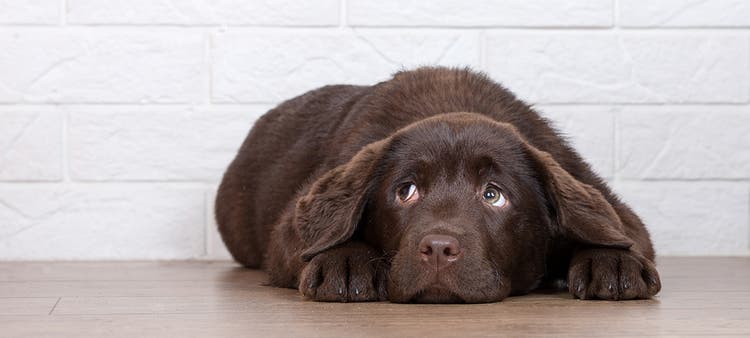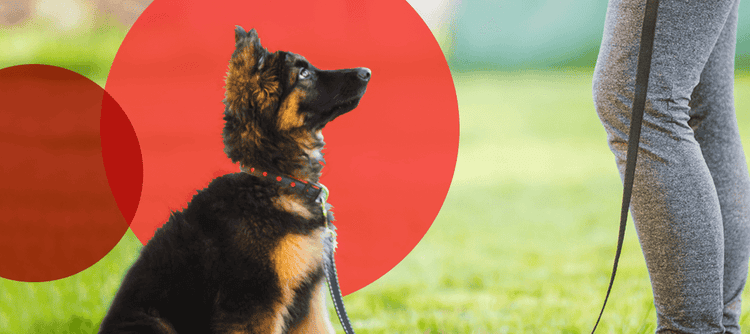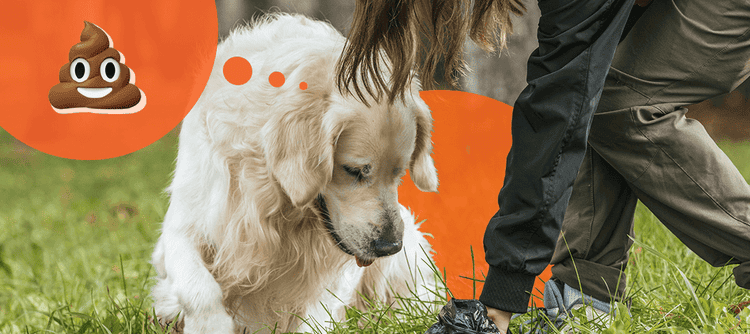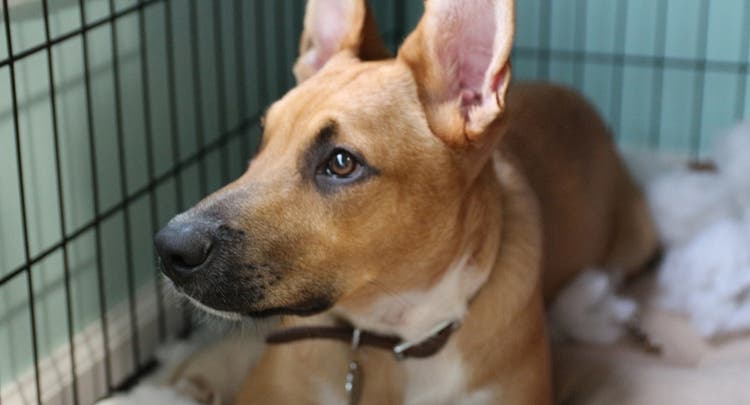If your dog is marking their territory in your house, it can be understandably frustrating. It’s important to narrow down what could be causing the behavior so you can determine the best way to stop your dog from marking or spraying inside.
What Is Marking?
There’s a difference between marking or spraying and urinating. Marking is deliberate and typically occurs on upright surfaces, like walls and cabinets, or on a specific object; dogs may also mark flat surfaces such as the floor. It usually involves a small amount of urine to mark spaces or objects as the dog’s territory. Urinating occurs when your dog simply can’t hold it in any longer and typically occurs on a flat surface.
Why Do Dogs Mark in the House?
Marking behavior is not unusual and is a way for dogs to assert their dominance. Both male and female dogs mark, and it happens most often in dogs 2 years old or younger. Marking can be related to your dog’s lineage, their upbringing as a puppy and the environment or situation of your household. None of these factors should prevent you from training your dog to stop this behavior.
The following are the most common causes for dogs marking in the house:
A New Family Member
Whether you add a new pet or a new person to the family, such as a significant other or even a baby, your dog could perceive this as a challenge to the family hierarchy. If your dog starts to spray near or on your bed, or near the new person’s clothing, this is a sign your dog is feeling challenged.
Stress
Your dog’s stress can be caused by many different reasons — some that might surprise you. This includes adding a new piece of furniture, having a verbal disagreement with another family member or even going to a friend’s house with pets and bringing their smells home with you. Uncertainty and change can cause dogs to become stressed and mark to gain control.
Keep in mind that separation anxiety — a dog urinating when you get home or get ready to leave — is not considered marking and should be dealt with differently. Talk to your vet about treatments for separation anxiety.
Medical Issues
If your dog suddenly changes their behavior and starts marking or spraying without anything else changing in your home, it could be a sign of a urinary tract infection (UTI). Additionally, if your dog urinates without realizing it (whether sleeping or awake), this isn’t considered marking. If you suspect a UTI or medical issue, go to your vet ASAP to determine the cause.
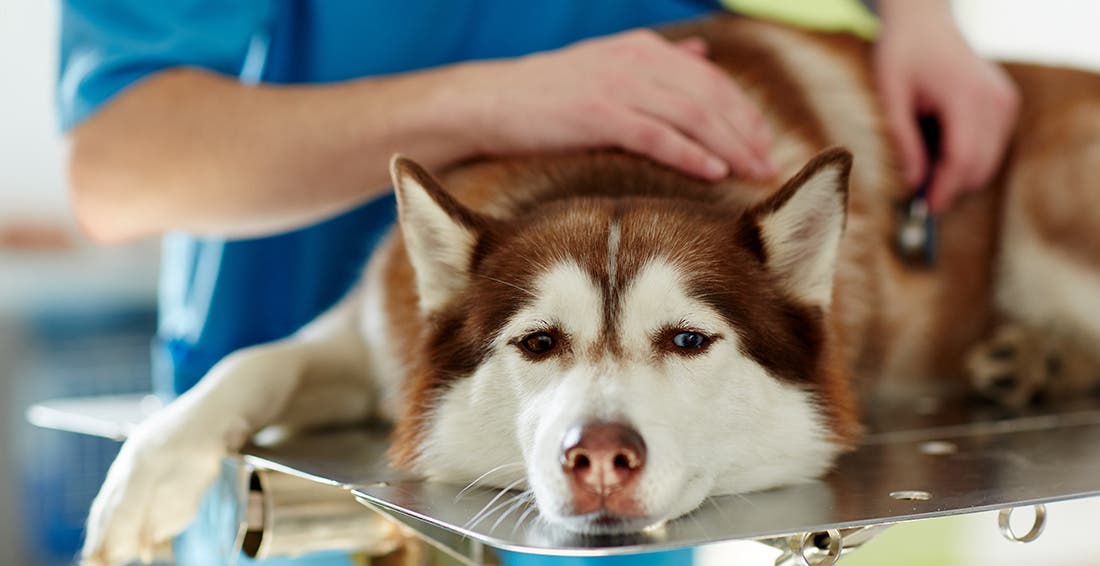
7 Ways to Stop Your Dog from Marking in the House
Here are some effective ways to help stop your dog from marking inside. In all approaches, don’t raise your voice or discipline your dog, which could make the incidents occur more often.
1. Clean the Mark
Dogs communicate through scent. If you don’t remove the trace odors of the marking, your dog will likely re-mark the same area. Be sure to avoid harsh chemicals or fragrant cleaners; dogs interpret these odors as “challenger” scents. Instead, use an enzyme-based cleaner that neutralizes the odor to remove all traces of it.
2. Reassociate the “Offending” Object or Space
If your dog seems to be targeting a certain area of your home or objects like shoes or pieces of furniture, try providing a treat or reward when they’re about to mark. If your dog starts to sniff around and circle an area, this usually indicates they’re getting ready for marking. Use a treat to quickly redirect your dog’s attention to associate the area or object with a reward, rather than a territorial reset.
3. Block Off or Remove the Marked Items
In cases where positive reinforcement or treats don’t work, remove all access to the object or area so your dog can’t fixate on it. If it’s a certain area, this will require more patience because your dog will know it’s still there. If blocking off the area isn’t possible, make the area unpleasant for your dog to go near by putting plastic or bubble wrap on the ground around the space. Provide distractions through play or a small treat to help curb their fixation.
4. Resolve “Conflicts” with New Family Members
Use positive reinforcement to help your dog associate good experiences with the new family member. If the person is old enough, have them feed your dog small treats or play with them using a favorite toy.
If you have a new baby, let your dog smell the baby’s blanket and then place the blanket in your dog’s sleeping area for a few days. Reward your dog with a small treat while holding the baby to associate positive experiences with the baby’s scent.
5. Reassert Your Role as Pack Leader
Dogs are pack animals and deferring to the alpha is in their nature, so it’s important for owners to establish themselves as the pack leader. The easiest way to do this is to train your dog to obey a direct command before feeding time or a walk. By consistently doing this, you’ll send the message that you’re in charge and spraying or marking will not help your dog become the pack leader.
6. Interrupt Your Dog in the Act
If you catch your dog in the act of marking, try startling them with a noise (such as clapping your hands or dropping keys on the floor) to disrupt the process.
As with any type of dog training, it may take time to teach your dog not to mark in the house. With a little patience and a lot of love, you can help your dog curb this unpleasant behavior.
References
- “Urine-Marking Behavior: How to Prevent It.” The Humane Society of the United States, https://www.humanesociety.org/resources/how-remove-pet-stains-and-odors.
- “Urine Marking in Dogs” WebMD, WebMD, https://www.webmd.com/pets/dogs/urine-marking-in-dogs.
- “Curbing the Issue of Dog Marking” American Kennel Club, American Kennel Club, 21 Sept. 2020, https://www.akc.org/expert-advice/training/curbing-marking/.


